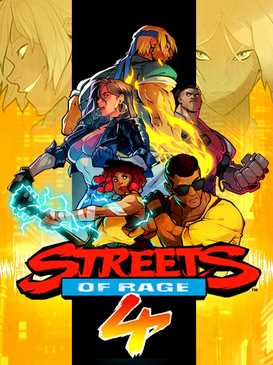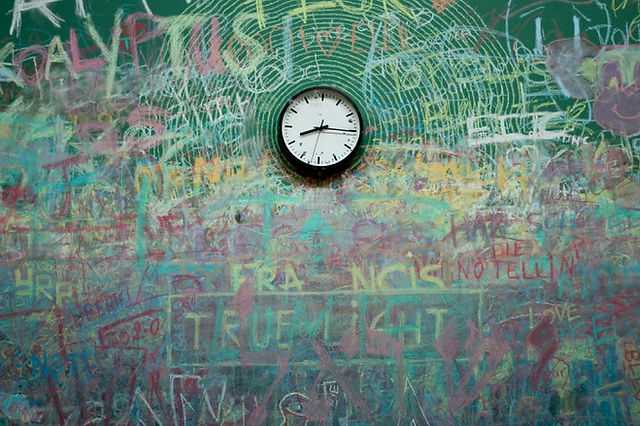
The vibrant and dynamic world of urban street art has captivated the attention of art enthusiasts and city dwellers alike. From sprawling cityscapes to hidden alleyways, urban murals have transformed the concrete jungles into captivating galleries of creativity. Coursing through the veins of every city, these colorful and thought-provoking artworks offer a unique lens into the soul of the urban landscape.
Walking through the streets, one can’t help but be drawn into the stories told by each mural. Through the skilled strokes of brushes, spray cans, and artistic vision, these murals breathe life into the otherwise mundane facades. Each mural possesses a personality of its own, reflecting the diversity and energy of the community it inhabits.
Urban street art has become a powerful form of self-expression, as artists convey powerful messages and tell compelling narratives through their work. From political statements to celebrations of cultural heritage, these murals ignite conversations and create a sense of unity amongst city dwellers. Some murals boldly challenge the status quo, urging viewers to question their surroundings and ignite a spark of revolution within their hearts.
Exploring the urban mural scene opens up a hidden world within the city, where art meets the streets. These vibrant and captivating artworks bring color, beauty, and a touch of magic to our everyday lives. Join us as we delve into the art of streets and journey through the urban mural scene, immersing ourselves in the stories behind each stroke of paint and discovering the artists who bring these masterpieces to life.
Graffiti art has long been present on city streets, serving as a powerful medium of self-expression for individuals around the world. From simple tags to elaborate murals, graffiti artists leave their mark on the urban landscape, conveying their messages, beliefs, and emotions through their art.
What sets graffiti apart from other forms of street art is its raw authenticity. It is often created illegally, in defiance of societal norms and regulations. This rebellious nature adds a layer of intensity and urgency to the artwork, making it a potent symbol of individual freedom and defiance against authority.
While graffiti is often seen as an act of vandalism, it is essential to recognize its cultural significance. It provides marginalized communities with a voice and a platform to express their experiences, hopes, and frustrations. In this way, graffiti becomes a powerful tool for social commentary and a means of challenging the status quo.
Not only does graffiti serve as a channel for personal expression, but it also brings vibrancy and life to the streets. Dull, concrete walls are transformed into dynamic canvases, captivating passersby and injecting energy into the urban environment. The colorful and intricate designs draw people in, encouraging them to pause, contemplate, and appreciate the artistry involved.
Furthermore, graffiti has the power to bridge cultural divides and foster a sense of community. Street artists from different backgrounds and ethnicities come together to collaborate, creating collaborative murals that celebrate diversity and unity. These murals become symbols of shared experiences and collective aspirations, reminding us of the strength that can be found in diversity.
This form of artistic expression allows artists to engage with the community, sparking conversations and challenging societal norms. Through their art, street artists address a wide range of issues such as politics, social injustice, and environmental concerns. The use of bold colors, intricate designs, and compelling imagery captivates viewers and draws attention to these important topics.
Breaking Down Barriers
Street art also has the power to break down barriers between different communities and cultures. It can bring people together, fostering a sense of unity and belonging. In many cities around the world, street art has become a symbol of a vibrant and inclusive urban culture.
Moreover, street art often reclaims neglected or abandoned spaces, injecting life and creativity into areas that were once considered unattractive or forgotten. It revitalizes neighborhoods, attracts tourists, and spurs economic growth. By beautifying these spaces, street art helps redefine the urban landscape and enhances the overall quality of life for residents.
A Platform for Emerging Artists
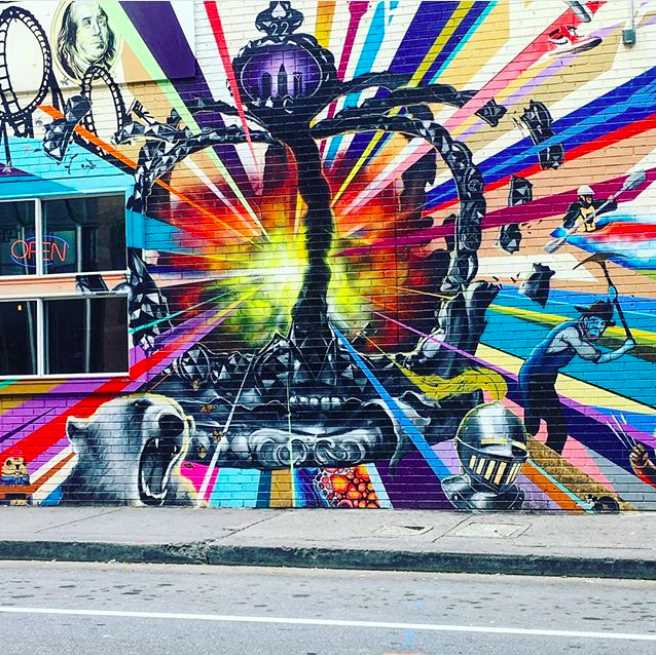
Street art offers a unique platform for emerging artists to showcase their talent and make a name for themselves. Unlike traditional art institutions, street art is accessible to everyone, regardless of their background or socioeconomic status. This democratization of art allows artists to reach a wider audience and gain recognition outside the conventional art world.
The transient nature of street art, which can be painted over or removed, adds an element of impermanence and urgency to these works. This impermanence highlights the ephemeral nature of art and reminds viewers to appreciate the present moment.
Stencils: Bringing Intricate Designs to the City Walls
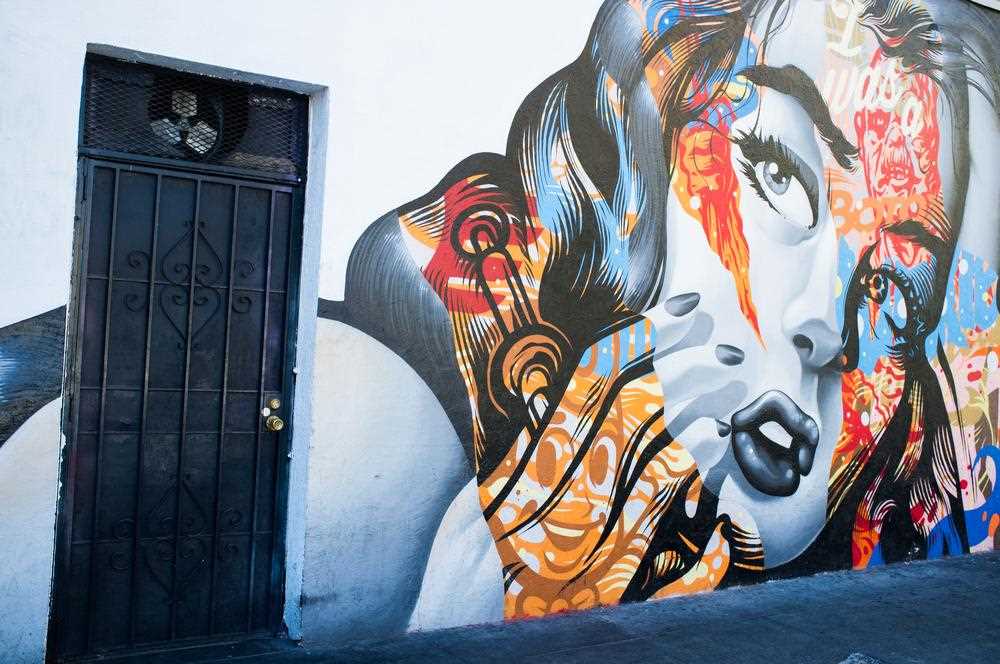
One of the most popular techniques used in the urban mural scene is stenciling. Stencils allow artists to create intricate and detailed designs on city walls with ease. This method involves cutting out a design or pattern on a thin sheet of material, such as cardboard or plastic, and then applying paint over the stencil onto the desired surface.
History of Stenciling
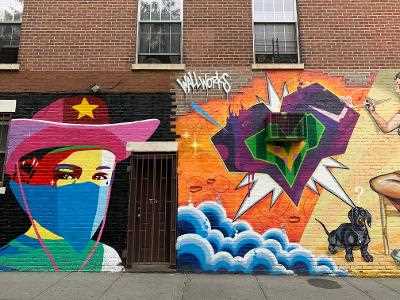
The art of stenciling has been around for centuries and has been used in various cultures around the world. It was commonly used in ancient Egypt and Greece to decorate walls, pottery, and fabrics. Stencil techniques were also prevalent during the Renaissance period, where artists would create stencils to apply gold leaf and decorative patterns on furniture, ceilings, and walls.
However, it was during the 20th century that stenciling became popular among street artists and graffiti writers. The technique allowed them to quickly and easily create large-scale murals on city walls, often under the cover of darkness to avoid detection.
The Process of Stenciling
To create a stencil, an artist starts by designing the desired image on a computer or sketching it manually. The design is then transferred onto a stencil material and carefully cut out using a craft knife or laser cutter. The resulting stencil consists of a negative space, where the paint will be applied, and a positive space, which is the material itself.
Once the stencil is ready, the artist chooses a suitable location for the mural and prepares the surface by cleaning it and applying a base coat. With the stencil in hand, the artist positions it on the wall and secures it in place. They then apply paint over the stencil using a spray can or a brush, being careful not to let the paint seep under the stencil edges.
The use of stencils allows artists to create highly detailed and intricate designs that would be difficult to achieve by freehand painting. The process also ensures that the final artwork is consistent in size and shape, making it easier to create repeatable patterns and images.
Advantages of Stenciling
Stenciling offers several advantages for artists working in the urban mural scene. Firstly, it allows them to complete large-scale murals in a relatively short amount of time, as the stencil can be used repeatedly to create multiple copies of the same design. This makes stenciling an efficient technique for street artists who often have limited time to work on their artworks.
Additionally, stenciling provides artists with greater control over the final result. The stencil acts as a guide, helping to ensure that the design is precise and accurate. It also allows artists to experiment with different colors, textures, and materials, adding depth and dimension to their murals.
Overall, stenciling is a versatile and impactful technique that has played a significant role in shaping the urban mural scene. It has allowed artists to bring their intricate designs to city walls, transforming ordinary spaces into vibrant and visually stunning environments.
| Pros | Cons |
|---|---|
| Efficient technique for large-scale murals | Can be limited by the size of the stencil |
| Precise and accurate designs | Requires careful planning and preparation |
| Allows for experimentation with colors and textures | Not suitable for highly complex or layered designs |
Tagging: The Subculture of Personalized Street Art
One of the most distinct forms of urban mural art is tagging, which is a subculture of personalized street art that has gained immense popularity in recent years. Tagging involves the use of stylized signatures or monikers and is often done using spray paint or markers. It is a way for artists to leave their mark on public spaces and express themselves in a unique and personal way.
Tagging has roots in graffiti culture, but has evolved into its own art form with its own set of rules and techniques. It is often associated with the rebellious nature of street art, as many taggers operate outside of the law to create their art. However, tagging can also be seen as a form of self-expression and a way for marginalized communities to reclaim public spaces.
The style of tagging can vary greatly from artist to artist, with each person developing their own unique signature or tag. Some artists prefer bold, block letters, while others opt for cursive or more intricate designs. The colors used in tagging are also diverse, with vibrant shades and gradients often being utilized to make the tag stand out.
Despite its controversial nature, tagging has become an integral part of the urban mural scene. It has gained recognition as a legitimate form of art and has been showcased in galleries and museums around the world. Tagging has also been embraced by brands and advertisers, who often commission artists to create murals featuring their logos or products.
Tagging is not without its critics, however. Some see it as vandalism and argue that it defaces public property. Others believe that it perpetuates a culture of illegal activity and encourages disrespect for the law. Despite these criticisms, tagging continues to thrive as a vibrant and influential subculture within the urban mural scene.
Whether you view tagging as art or vandalism, there is no denying its impact on the urban landscape. It has transformed blank walls into vibrant canvases, turning once overlooked spaces into visual spectacles. From its humble beginnings as a form of rebellion, tagging has become a powerful force in the world of street art.
Tagging is a subculture that has revolutionized the way we perceive and interact with public spaces, and it continues to inspire and provoke discussion in the urban mural scene today.

I am a mural enthusiast and a fervent admirer of street art. Rather than creating murals myself, I am passionate about collecting them. My love for street art knows no bounds. I am dedicated to curating and cherishing these artworks that grace the streets. My collection stands as a testament to my profound appreciation for this form of artistic expression.
read about me



